How Long Does It Take To Be Able To Do the Splits?
Author:
Reviewed by:
(21 years of Oly Lifting experience)
Unlock your full potential by engaging with our experts and community! Have questions about your fitness journey or looking for expert advice on weightlifting techniques? Don’t hesitate — leave a comment below and Oleksiy Kononov will provide a personalized answer and insights to help you reach your goals.
Torokhtiy is reader-supported. Some links are affiliate links, and we may earn a commission at no extra cost to you. See our disclosure page for details.
How long does it take to be able to do the splits? This a question that I hear in the gym quite often. And while the question itself is quite common, the answers (depending on who’s giving them) can be pretty ludicrous.
The answer can vary greatly from person to person depending upon factors like previous experience with flexibility training or age. However, throughout this article, we’ll explore together all aspects of this journey; delving into what drives progress while also revealing tips and benchmarks that can help bridge gaps between our current level of ability and splits elite status.
So I’ll ensure I give a comprehensive, but also non-complicated answer, along with a guide on what you can do to achive splits in general, and how to achieve them faster. Let’s not beat around the bush and let’s get to it!
How long does it take to do splits? The time it takes to achieve the splits varies for everyone, depending on factors like starting flexibility, age, and consistent training. Generally, it can take several weeks to months of dedicated practice to gradually improve flexibility and accomplish the splits.
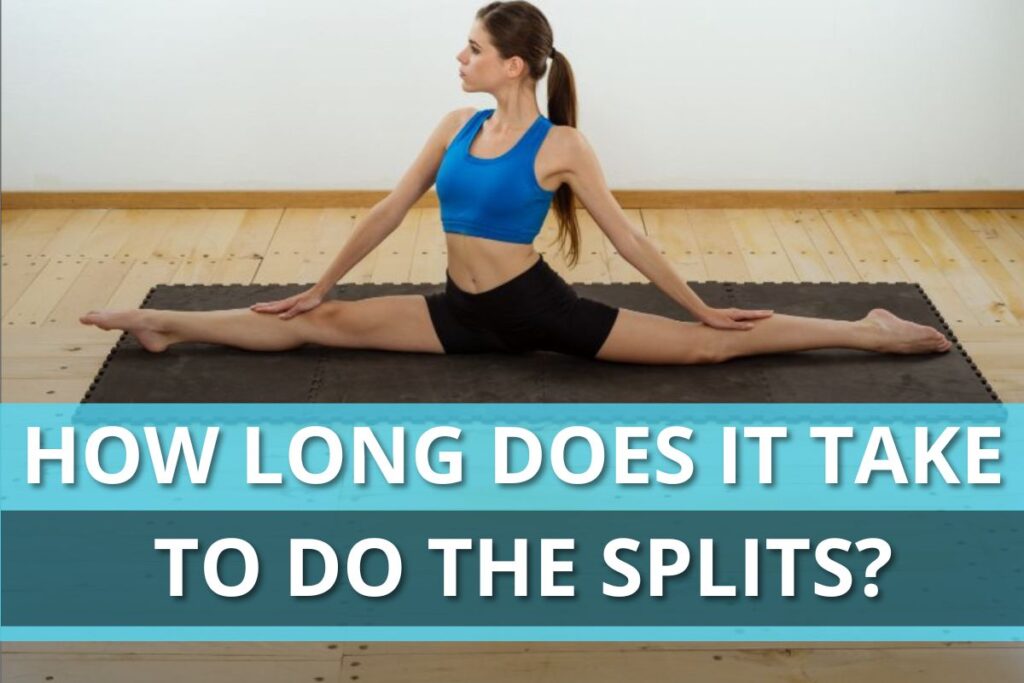
How Long Does It Take To Be Able to Do the Splits?
Once I’ve decided on trying to achieve doing splits (from relatively inflexible in the groin area, to doing perfect splits), a question came to mind – just how long does it take to do the splits and achieve success?
The desire consumed me to gather a comprehensive regime showing me aptly what maneuvers I ought to make, when to make them, and for what duration. I needed to know these things before attaining split perfection was guaranteed. I simply didn’t want to dive into this head first and pick up the tips and tricks along the way. But…
Unfortunately, there’s no such cut-and-dried prescription for us. The duration each person takes is largely shaped by various dynamics that influence learning speed; hence it’s relatively different among individuals. Let us examine some of these factors together to empower you to attain your goal.
1. Starting Flexibility
People who naturally exhibit higher levels of compliance or individuals previously exposed to adequate training in terms of stretching routines will see more noticeable results much sooner than those with restricted movements. Owing to limitations affecting their current range-of-motion levels, individuals requiring persistence and dedication will need more time-generated results when it comes to increasing fluidity during split performances.
2. Age
I often hear people saying things like, “Age doesn’t matter!”. Well, I hate to break it to you, but it does. Age matters. A lot! No one can escape biology. We can only adapt to it. Age can affect flexibility and the ability to achieve the splits.

Children and teenagers, and young people in general, tend to be more flexible, which can make their progress faster and easier. And the older you get the less of that advantage you have. But, of course, that doesn’t mean that if you’re above a certain age that you should immediately throw in the towel. It simply means that you are still able to achieve perfect splits – but it will take more persistence, more time, and much more dedication on your end in order to get there.
3. Consistent Training
As with a lot of things in life – consistency is vital. It’s the same story with making the split journey. You’re doing a lot of hard work, and the progress is there. But it is so minuscule and happens in such small increments that it can sometimes feel as if you’re stuck in one spot for a long time period. But stay assured – if you’re working hard, the progress is there. And if you break that cycle because of doubt or lack of motivation, then it has all been for nothing. Stay focused on staying consistent and active – and the end result will be closer until you finally reach it.
4. Individual Differences
Let us not forget that each individual possesses an exclusive set of physical attributes – no two bodies are alike. While genetics do play a slight role in flexibility, there exist those with naturally high levels of suppleness in their muscles and synovial joints. This natural gift grants them expansive freedom of movement compared to others – these particularities might also aid in accomplishing the split position at an accelerated pace.
I remember seeing a group of friends trying to increase their flexibility and, among other things, trying to achieve splits. And one individual achieved amazing results much quicker (for no obvious reason). Most likely, genes played a huge role in that success.
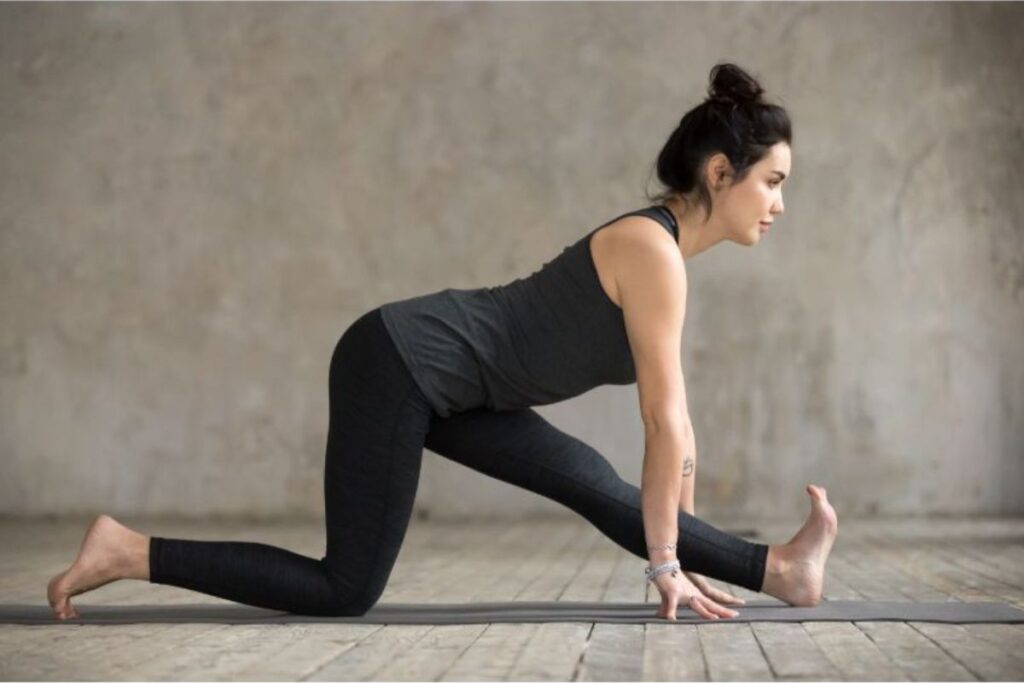
What Types of Splits Are There in Gymnastics?
If you are thinking splits, then you’ve probably imagined the straddle split or the side split. But did you know that there is more to splits than just these two? I’ll go ahead and list all the split variations there are, with some general info on what they look like when executed.
1. Straddle Split
One cannot overemphasize the importance of mastering the straddle split in gymnastics; it entails extending one’s legs sideways, forming a wide V-shaped angle. Its worth noting that this particular exercise serves as an excellent starting point for developing flexibility among athletes and is notably less difficult than other types of splits.
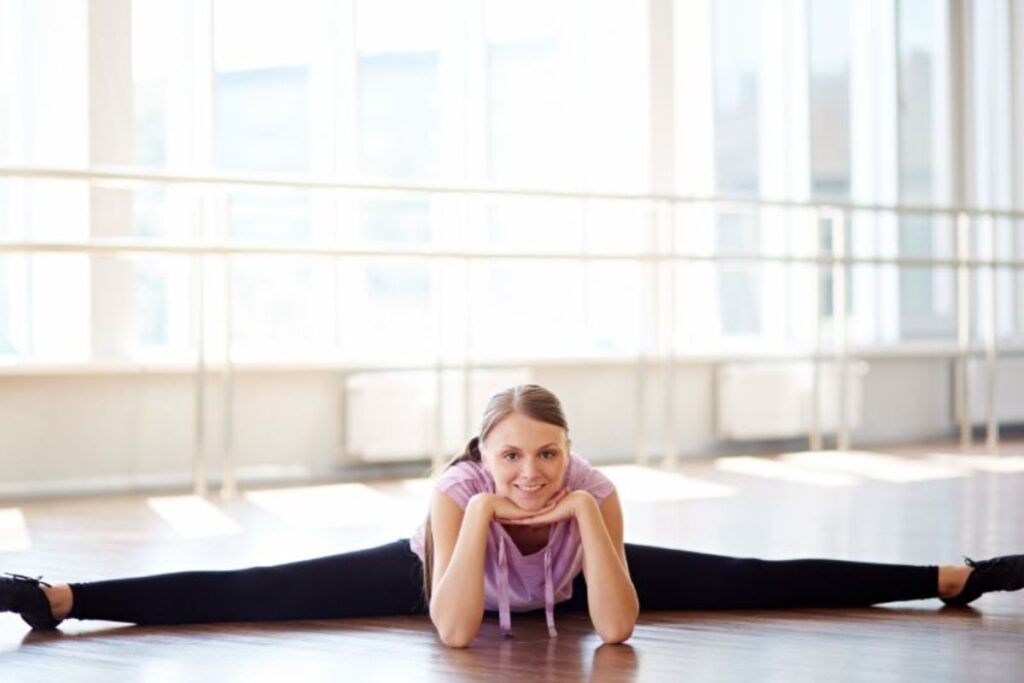
In general attaining proficiency in executing this skill requires persistent practice and proper techniques implementation; typically taking some months before one can do it seamlessly or even under pressure during live performances.
2. Front Split
Forming an ideal front split necessitates stretching out one leg forward and having the other parallelly extended behind your back until both legs create a perfectly straight line.
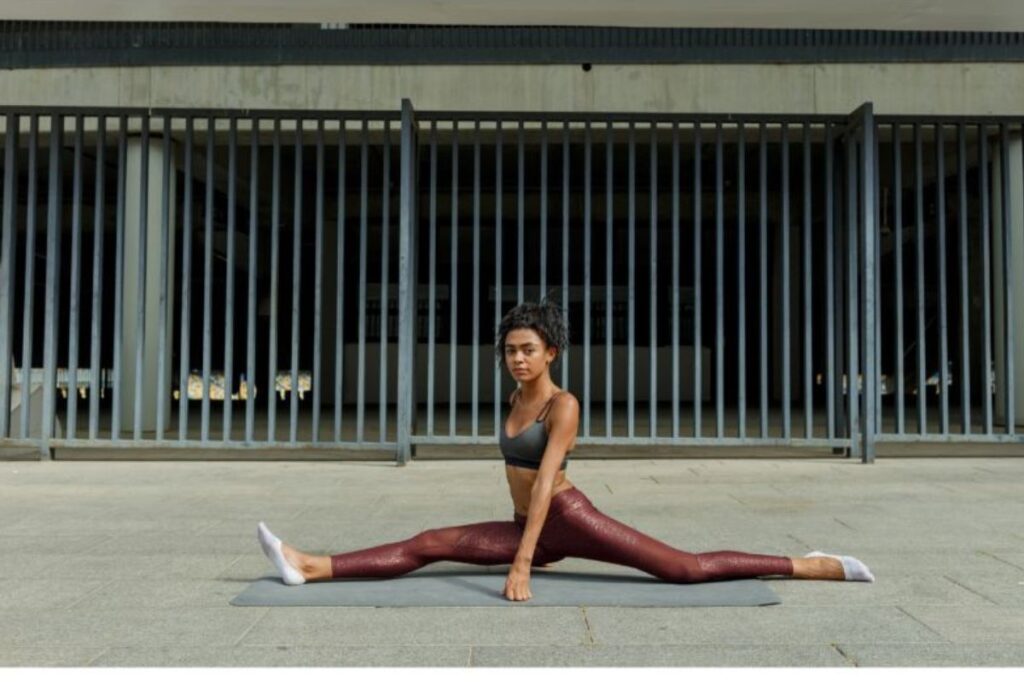
This position requires higher levels of hip flexor and hamstring extensibility that need joint exercising over time. Typically, it takes anywhere from several months to an entire year for someone dedicated enough.
3. Side Split
To execute the side split or middle split, you must stretch your legs sideways until you form a straight line spanning left and right. This move encompasses impressive hip, hamstring, and adductor flexibility.
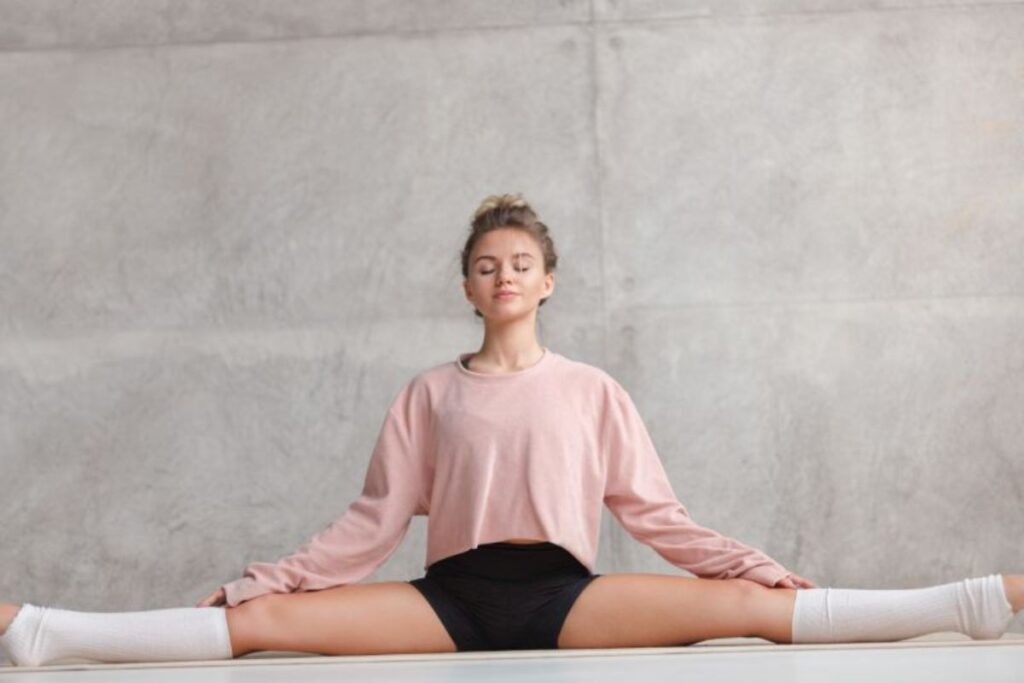
Mastering middle splits takes intense dedication and time; sometimes ranging from months up to several years of practice.
4. Over Split
Have you ever seen people doing a regular front split (sometimes while standing), and then they’d proceed to further the split into an unnatural over-extension that looks as if their leg is about to pop off? Yikes! Well, that was likely the over split.
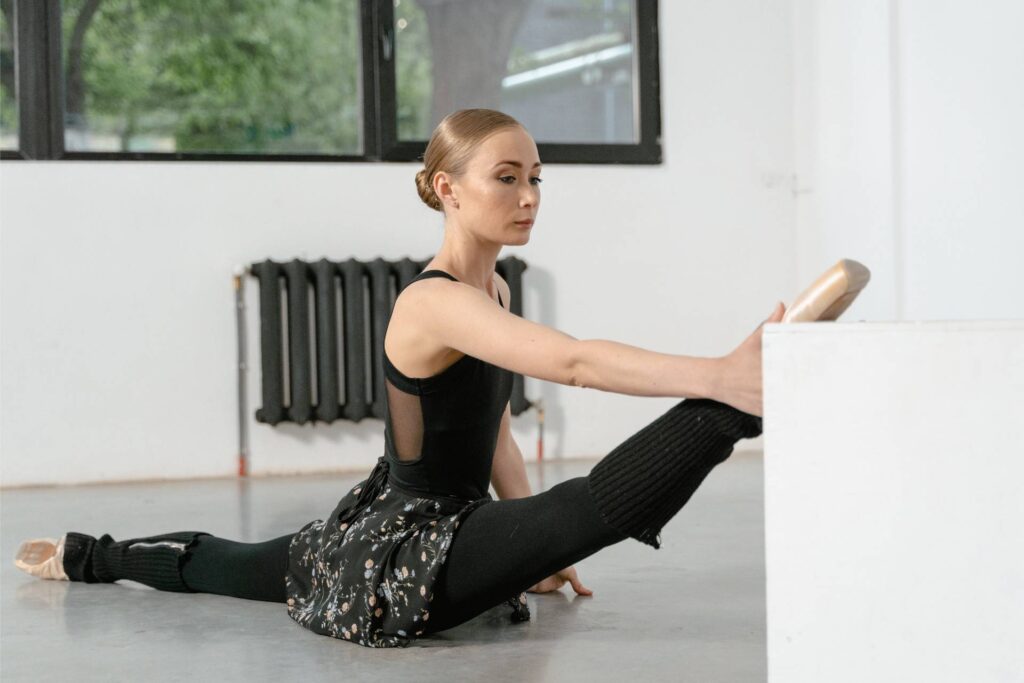
Basically, if the expansion exceeds 180 degrees, that’s an oversplit. This is sometimes limited to requiring commitment to training from an early age or having some natural attunement with your inner flexibility.
Follow us!

Free!
Get a 2-week Weightlifting Program as a bonus for the subscription to kickstart your training plan!

Free!
5. Switch Split
And the last one worth mentioning is the switch split. And with good reason. You’d likely see only professional gymnasts or some contortionists perform these. They are rare to be seen, but they are truly spectacular. You do a switch split from a standing position (stationary or while walking or running).
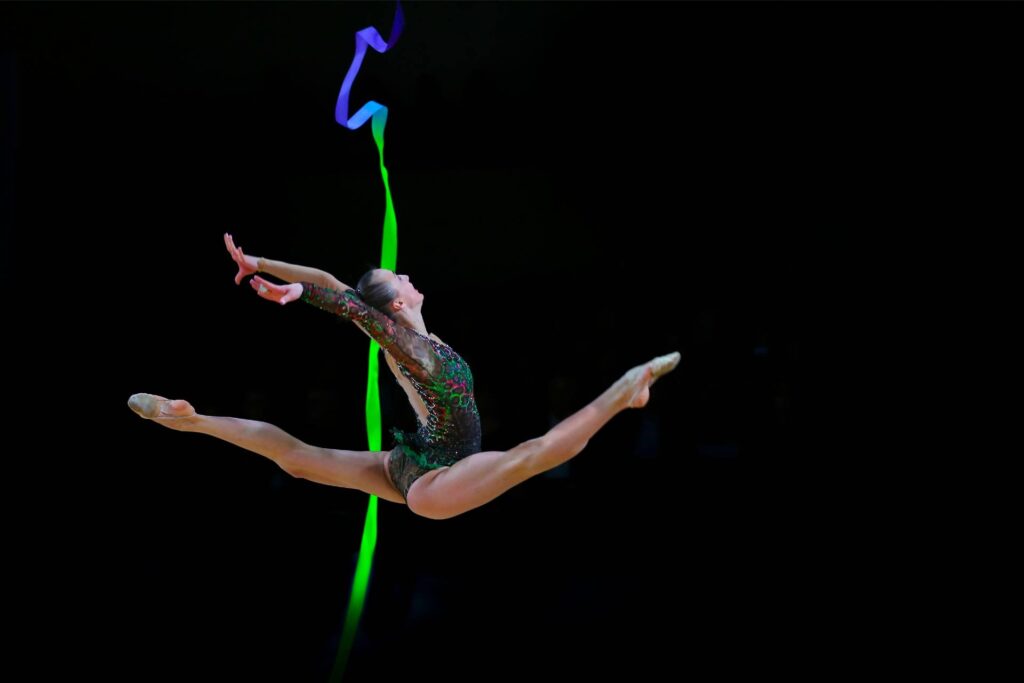
And from there, you go into a mid-air jumping split. This requires not only amazing flexibility, but also is heavily reliant on coordination and agility in order to perform in the first place.
6 Tips to Do the Splits Faster
How long does it take to learn the splits? Even though there’s no quick fix and no way for you to be able to do the splits overnight, I have a few tips that have helped me speed up my results. If you follow them, you just might get results a bit more quickly.
1. Consistent Stretching Routine
If you want to be able to do the splits, then the most important aspect of your exercising journey has to do with stretching. You simply have to learn how to breathe and live stretching. If you don’t improve flexibility in your hips, hamstrings, and adductors, you won’t get the desired results. The best thing that I’ve found is trying to create a routine. Consistency is critical here. Your progress will be measured in breadcrumbs, but at least you’ll be moving in the right direction.
2. Dynamic Warm-Up
In order to prime your muscles for deeper stretches, it is important to incorporate a dynamic warm up routine beforehand. This routine typically includes movements like leg swings, lunges, and hip circles that aim to increase blood flow and enhance muscle performance and flexibility.
3. Targeted Stretching
It is vital to emphasize specific muscle groups when targeting improvements in split flexibility. Straddle stretches, lunges, butterfly stretches, and seated forward folds are some of the excellent options for enhancing performance when doing splits. By focusing on these exercises regularly, you’ll impact muscles like hips flexors, hamstrings as well as adductors which in turn increases flexibility, making it possible to accomplish a much deeper stretch.
4. Active Flexibility Training
It is recommended that one includes active flexibility exercises in their fitness routine, along with static stretching. Active stretches entail the engagement of muscles while moving through a range of motion, like active leg swings and dynamic split movements. These exercises provide the added benefit of strengthening and enhancing control in stretched positions.
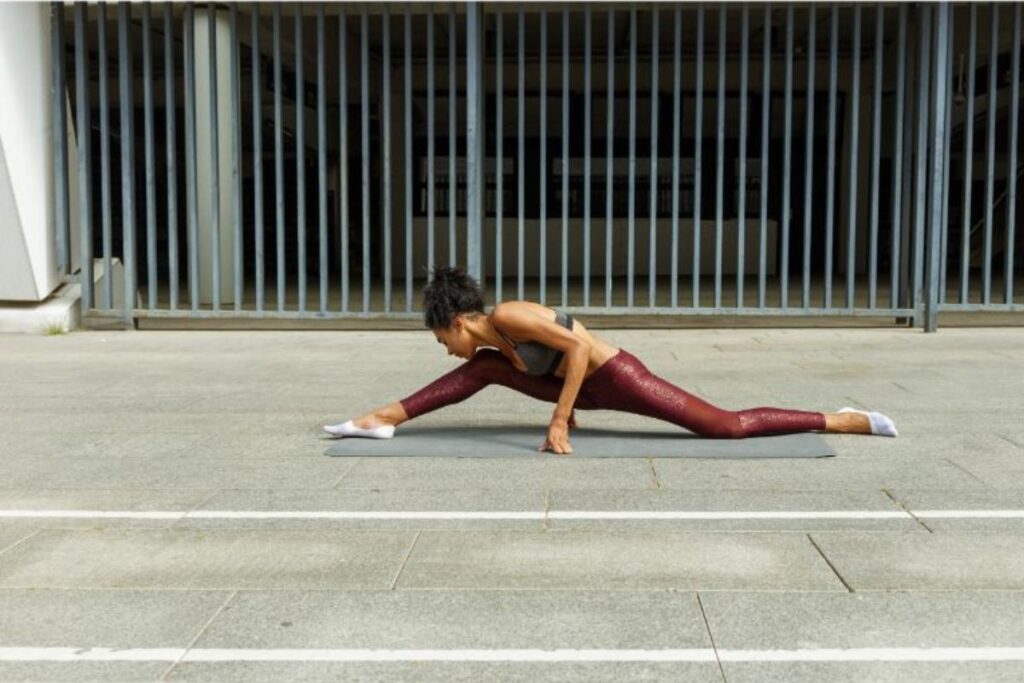
5. Proprioceptive Neuromuscular Facilitation (PNF)
Effective stretching techniques can enhance your flexibility levels significantly – opt for moves such as contract-relax or hold-relax for optimal results. An advanced method called proprioceptive neuromuscular facilitation (PNF) requires a two-step process where target muscles are contracted initially before relaxation and further extension. Studies have shown that this technique leads to increased hip joint flexibility and greater range of motion.
6. Gradual Progression
Stretching is an exercise that demands patience and attentiveness towards our physical sensations. To incorporate this practice effectively into our daily fitness routine, it’s important not to rush through it carelessly. Gradual increments are what you’re looking for. Remember, injury prevention always precedes progression! Plus, in case that’s not enough, it is better to prevent injury than to fixing it.
So, how long does it take to do a full split? It can be a few months, up to years, potentially. It differs from person to person. What will determine how long to do middle splits, besides predetermined stats and abilities, is commitment and determination.
How to Do Splits Safely?
When striving for success with the split pose it can be tempting to push yourself beyond your limits and expect rapid development with each attempt. Taking a step back and focusing on training safely rather than excessively will ultimately bring much greater gains! With this in mind -and drawing from my own experiences – I encourage you to prioritize ensuring that every training session is done with caution and care by applying these useful strategies below:
1. Warm-Up Thoroughly
Your safety should always be paramount when attempting split exercises. To decrease potential harm to your body you should spend some time warming up your muscles first. Do this with basic cardiovascular activities like jogging or jumping jacks and continue with dynamic stretching. Stretching is aimed at activating targeted muscle groups essential for achieving successful splits techniques. Just remember that a thorough warm-up practice serves not only to improve performance but also mitigates harm and helps develop overall physical well-being.
2. Proper Technique
During split exercises adopting correct technique can make a significant difference for maximum benefit with minimum discomfort risk; hence it’s vital always to pay attention when performing them. Maintaining alignment by squaring the hips while elongating the spine should be top of mind throughout these sessions.
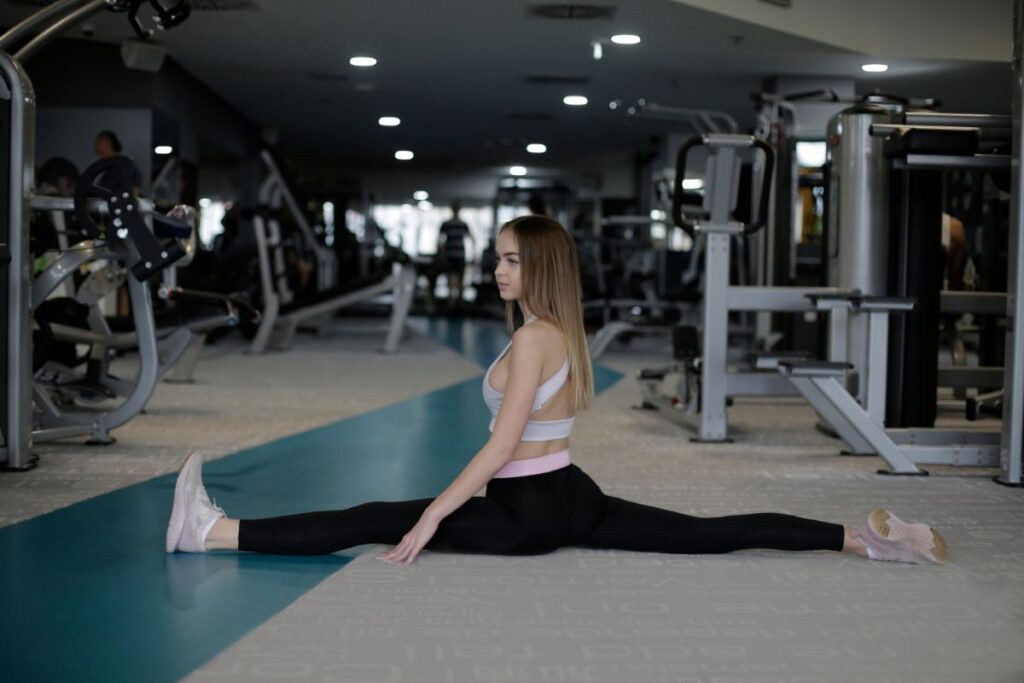
If you apply too much pressure on the joints or push yourself too far beyond present maximum flexibility range during these workouts, there is an increased likelihood of complications occurring. Ease into each exercise gradually rather than feel compelled to rush headfirst for optimal results in a controlled manner over time.
3. Use Props or Support
Personally, I have found that incorporating yoga blocks or chairs into my splits training regimen has been incredibly advantageous. By utilizing these items, individuals are able to sustain proper form and gain invaluable support as they work hard to enhance their overall flexibility.
4. Listen to Your Body
Don’t ignore what your body is telling you during split exercises. Your body cannot communicate by using words (unless you’re a cyborg, or some advanced lifeform), but it will communicate by sending signals. Any sharp pains or uncomfortable sensations need immediate attention–adjust and reassess your technique as needed. Although stretching can cause some discomfort at times. Ensure that you differentiate between typical stretching sensations versus actual pain that could harm you in the long run.
5. Balance Stretching with Strengthening
While flexibility is essential for splits, it’s equally important to strengthen the muscles involved. Include exercises targeting hip flexors, hamstrings, and adductors to build strength and stability in these areas. Balanced muscle strength helps support flexibility and reduces the risk of imbalances or strain.
Make sure to also take time for rest and recovery between stretching sessions. Overtraining can lead to fatigue and increase the risk of injury, so rest days are vital for your muscles to repair and regenerate.
FAQ
Can Everyone Learn to Do the Splits?
Technically, yes. Everyone can, but – there are a few things to entertain. Complete splits may not be attainable for everybody due to various reasons. These could be genetics or baseline fitness levels; there exists an opportunity for improvement through a disciplined practice focused on appropriate techniques coupled with persistence. The complexity of executing this motion varies depending on individuals’ intrinsic traits, such as their physiological composition in addition to pre-existing levels of flexion.
Can You Do Splits in 30 Days?
Is it possible? Yes, it is. But… And there’s always at least one but. In order for someone seeking to do splits in just thirty days’ time frame should bear in mind that individual circumstances play an integral role in determining their success rate. One’s initial flexibility level should be taken into account along with their dedication towards consistently adhering to the necessary training regime as well as genetics which can have a significant impact on their overall progress process.
Therefore while some people may note remarkable differences after only four weeks others might require extended periods of consistent hard work before they can perform full splits proficiently.
Is It Ok to Force Yourself to Do the Splits?
No, it is not ok. While there is Nooften a strong desire among individuals looking forward to attaining splits’ mastery quickly, pushing yourself too hard isn’t always effective. In fact – doing so may lead you down an opposite path – inducing pain instead of progress!
Therefore, it’s vital that when practicing stretches meant for attaining this skill- pay close attention to signals from your body; slowly but carefully stretching each moment without using excessive strength or power, which could harm rather than help muscle functionality!
Conclusion
How long to do middle splits? Each person’s process will inevitably differ in terms of how long it takes them personally to develop skills relating toward executing a split properly; nevertheless, with dedication and precise techniques that fit one’s individual style anyone can attain their intended outcome. It is significant within one’s journey toward versatility within their body movements; each advancement made should be recognized as growth within oneself as an athlete/performer/etc.
Regarding those tackling splits at different stages throughout their pursuits — being knowledgeable of people’s unique realities concerning stretching/movement/body awareness — I am interested in hearing about possible obstacles encountered. What were your experiences during progress? Do you have any guidance or advice regarding this aspiration?
If you have anything to add or ask, I’d be thrilled if you left your thoughts and experiences in the comments section below! I love talking about fitness with different people since it broads your perspective. And that’s what’s it all about for me.
Also read:
- How to Do the Splits in 30 Days
- How to Do Straddle Splits
- Can Anyone Learn to Do the Splits
- How to Get Middle Splits
- Handstand Benefits
- How to Hold a Handstand Longer
References:
- Aerobic exercise: How to warm up and cool down // Mayoclinic: https://www.mayoclinic.org/healthy-lifestyle/fitness/in-depth/exercise/art-20045517
- Proprioceptive neuromuscular facilitation stretching // NCBI: https://pubmed.ncbi.nlm.nih.gov/17052131/
- The relationship between isometric contraction durations during hold-relax stretching and improvement of hamstring flexibility // NCBI: https://pubmed.ncbi.nlm.nih.gov/15756164/
- What Is PNF Stretching? // WEBMD: https://www.webmd.com/fitness-exercise/what-is-pnf-stretching
- Acute effects of passive vs. active warm-up associated with stretching on flexibility and neuromuscular function // Researchgate: https://www.researchgate.net/publication/371145170
- Is athletic performance determined by genetics? // Medlineplus: https://medlineplus.gov/genetics/understanding/traits/athleticperformance/
- Photos by Anderea Piacquadio, Pexels; fizkes, Canva.com; Summers Graphics, Canva.com; mediaphotos, Canva.com; SergiyMolchenko, Canva.com; MART PRODUCTION, Pexels; vm, Canva.com.
Why Trust Us?
With over 20 years in Olympic weightlifting, strength training, nutrition coaching, and general fitness our team does its best to provide the audience with ultimate support and meet the needs and requirements of advanced athletes and professional lifters, as well as people who strive to open new opportunities and develop their physical capabilities with us.
By trusting the recommendations of our certified experts in coaching, nutrition, and sports training programming, as well as scientific consultants, and physiotherapists, we provide you with thorough, well-considered, and scientifically proven content. All the information given in the articles concerning workout programming, separate exercises, and athletic performance, in general, is based on verified data.
The product testing process is described in more detail here.
Author: Oleksiy Kononov
Former Cirque Du Soleil Artist
Ukrainian Gymnast
More than 25 years ago Oleksiy started his sports career. He major in gymnastics which is definitely not an easy sport to go in for!
To become an athletic champion (in Ukraine, for instance, we mean here the title of “Master of Sports”) in gymnastics, one needs to spend at least 10 years and start training no later than being six years old. As for Oleksiy, he has fulfilled all the criteria.
During this period of time, definitely not short, he managed to become:
- Master of Sports, Champion of the State and International Tournaments;
- Member of the national team of Ukraine, having a perfect opportunity to train the best team ever!
- Part of Cirque Du Soleil team (as an artist).
Reviewed by: Oleksiy Torokhtiy
Olympic Weightlifting Champion, PhD in Sport Science
Best Results: Snatch – 200 kg,
C&J – 240 kg
Oleksiy Torokhtiy is a professional athlete boasting 20 years of experience in Olympic weightlifting. With multiple European and World titles under his belt, he has showcased his prowess in two Olympic Games (Beijing 2008 and London 2012). Upon concluding his illustrious career, Oleksiy dedicated himself to coaching. By 2022, he had conducted over 200 weightlifting seminars worldwide. He is the visionary behind an international sportswear and accessories brand known for its motto, “Warm Body Cold Mind.” Additionally, he is an esteemed author and the creator of a series of training programs and eBooks.

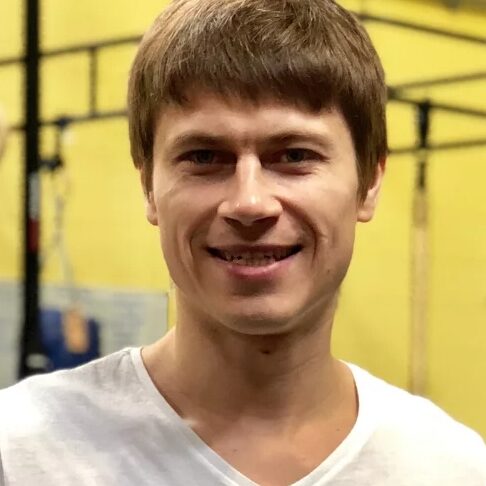


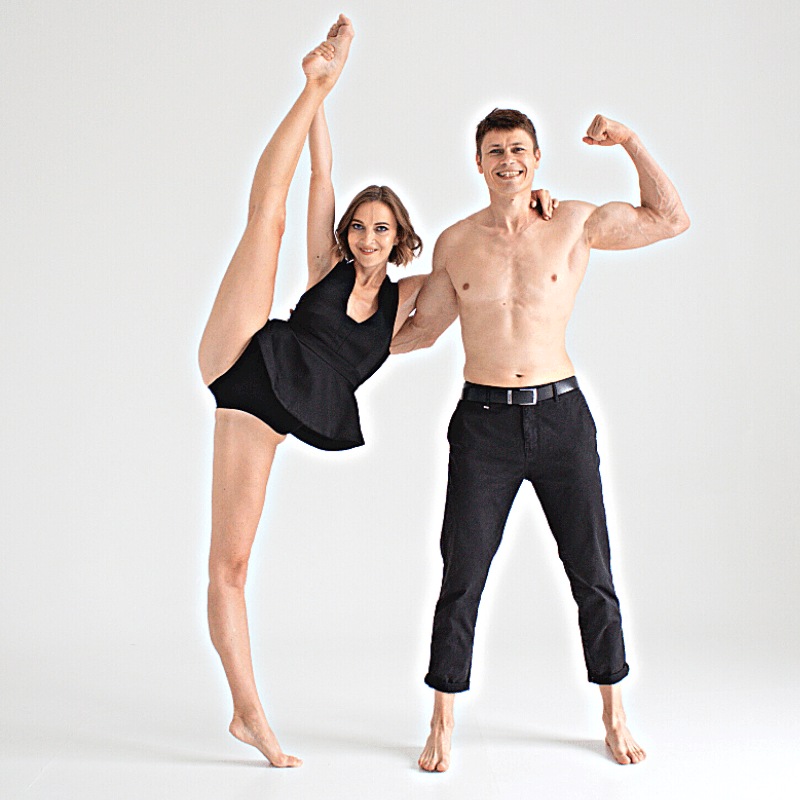
Still have questions after reading our article? Unlock your full potential by engaging with our experts and community! Don’t hesitate — leave a comment below and Oleksiy Kononov will provide a personalized answer and insights to help you reach your goals.